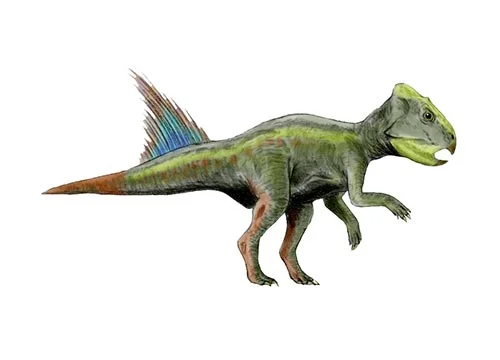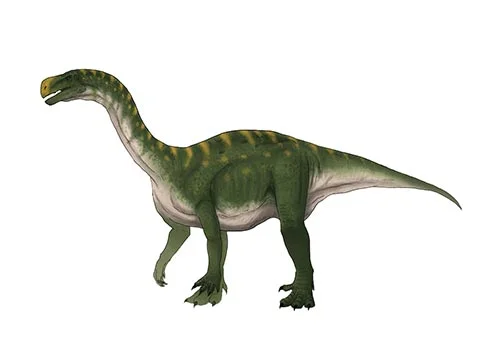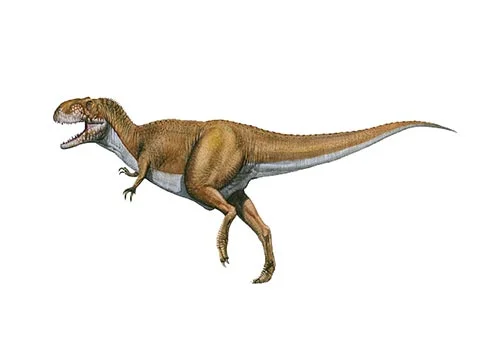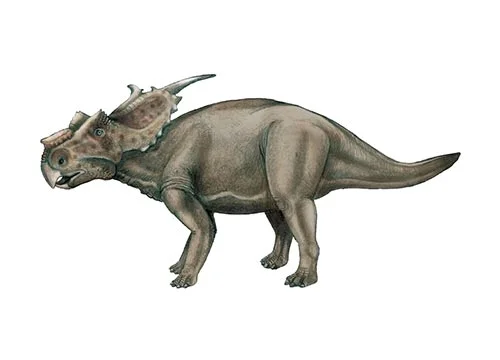Archaeoceratops (Ancient horned face)

Ar-kay-oh-seh-rah-tops
Dong & Azuma - 1997
Herbivore
Estimated 90cm long
Ceratopsian
A. oshimai (type), A. yujingziensis
China - Gansu Province
Early Cretaceous, 121-99 million years ago
Archaeoceratops Facts
Archaeoceratops is a genus of primitive ceratopsian dinosaurs that lived during the Early Cretaceous period, approximately 126 to 100 million years ago. The genus contains a single species, Archaeoceratops oshimai, which was first discovered in the Jehol biota of Liaoning Province, China.
Archaeoceratops was a small dinosaur, estimated to have measured about 1.5 to 2 meters in length and weighed between 60 to 100 kilograms. Despite its small size, Archaeoceratops was a herbivore with a unique anatomy, including a beaked snout, a large bony frill on the back of its head, and two large horns above its eyes.
The bony frill of Archaeoceratops is one of its defining features, and it is thought to have served as a visual and auditory display, used for attracting mates or deterring predators. The horns above its eyes were much smaller than those seen in later ceratopsian dinosaurs, such as Triceratops, and may have served a similar purpose.
In terms of geographical distribution, Archaeoceratops is known only from the Jehol biota of Liaoning Province, China, which was once a lush and diverse ecosystem, home to a wide variety of plants and animals. The discovery of Archaeoceratops in this region provides important information about the evolution of ceratopsian dinosaurs and the fauna of the Early Cretaceous period in Asia.
Archaeoceratops is a significant dinosaur genus for several reasons. Firstly, it is one of the earliest known ceratopsian dinosaurs, and its discovery sheds light on the evolution and diversification of this group of dinosaurs. Secondly, its unique anatomy, including the bony frill and horns, provides insights into the adaptations and ecological roles of ceratopsian dinosaurs. Finally, the presence of Archaeoceratops in the Jehol biota highlights the importance of this region for the study of dinosaur evolution and diversity.
In conclusion, Archaeoceratops is a fascinating dinosaur species that provides valuable insights into the evolution and ecology of ceratopsian dinosaurs and the fauna of the Early Cretaceous period in Asia. I hope this brief overview has sparked your interest in this amazing dinosaur genus, and I encourage you to learn more about its discovery, anatomy, and significance.



